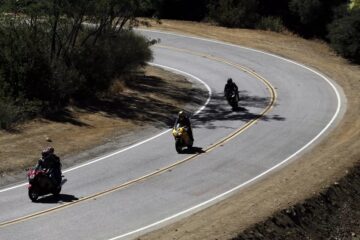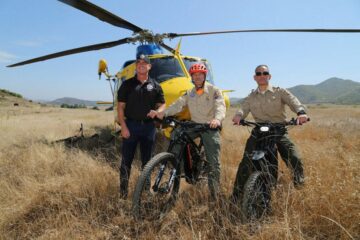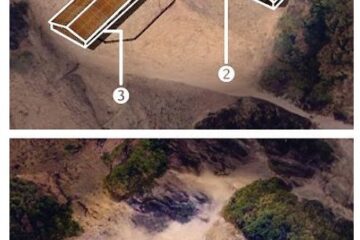Starry-eyed from a fire in the sky
FIRST PERSON: A front-row seat to the Perseid meteor shower gives Sierra hikers a taste of the ancients’ sense of awestruck wonder.
Source of this article – Los Angeles Times, August 30, 2005.
By Carrie Barber, Times Staff Writer
THE GRANITE WAS COLD AND THE WIND cut like an icy ax, but the sky was on fire.
This was what we’d come for. Six of us, lying on the frigid slab of rock, had backpacked to Thousand Island Lake in the Sierra to see the Perseid meteor shower. Every August, when Earth passes through the tail of Comet Swift-Tuttle, burning bits of comet dust put on a fireworks show.
The wide-open lake basin, at nearly 10,000 feet, promised an excellent view. But it was the “blue-sky meteors” that got me here.
That’s what Bob, now trekking with us, named the spectacle he first saw years ago when he brought his son to this spot for the meteor shower. From 3 p.m. until dark, gold-tipped darts with smoking tails shot through the sky, so close he feared they’d be hit by one. Was it a jet? A volcano? Were they under attack? Finally it dawned on him: The meteor shower had begun.
Shooting stars in daylight? This I had to see.
So my husband, Davis, and I, with Bob and three other friends, started early one August morning at Agnew Meadows outside Mammoth Lakes and headed up the Shadow Lake trail. It was a stellar hike, the dramatic scenery punctuated by lightning and hail, our camaraderie cemented by bad jokes and rehydrated meals. But the lingering storms had me fretting about visibility. I kept one eye on the sky, willing the clouds away.
The next morning dawned with crimson thunderheads retreating over the mountains. My 30-pound pack seemed lighter as we began our final push to Thousand Island Lake. Up and down we hiked, the trail taking us past Garnet, Emerald and Ruby lakes, a string of gems so beautiful it seemed almost a cliché. One pass, thickly carpeted with Indian paintbrush, lupine and other wildflowers, inspired an hourlong reverie for the photographers in our group.
Later that afternoon we limped through a meadow that opens into Thousand Island Lake and collapsed on a granite slab. As we pitched our tents, Bob shouted, “Look!” There between Mt. Banner and Mt. Ritter, a smoky streak tipped in gold was being etched against the sky.
A blue-sky meteor.
By nightfall, food packed away in bear cans, our excitement grew as the temperature sank. It was a perfect, crisp night with a new moon, and the sky was alive with stars. Swathed in fleece and wool, caps pulled down over our ears, we lay in a row on the rock as the show unfolded.
Against the swirl of the Milky Way, the meteors darted randomly in colorful electric bursts before fading. We shouted: “Over there, blue!” “Green over here!” They seemed so close, buzzing overhead, that we expected one to land in our camp. Bob, lying closest to the lake, could see the meteors reflected in the glassy water.
We whooped and cheered in exhilaration. “Shhhh!” Bob admonished us. “Listen! They make a noise.” And there it was, a faraway hiss, like a campfire doused in water. But the sound was mostly drowned out by our cheering.
Then our eyes were drawn to the north. Soaring out of the horizon came a meteor so big that its head split the sky and its tail left a wake of gold, green and blue that filled my field of vision. I pressed my back into the granite; surely it would hit me if I didn’t flatten myself against the rock.
We followed it, our heads turning from one side to the other as it soared overhead and across the lake. Its tail seemed to stretch for miles, and instead of quickly fading, it hurtled out of sight and over the hill, as if eager to make some more jaws drop in Mammoth.
Nothing in my imagination could have conjured these sights and sounds. No wonder the ancients worshiped gods in the sky. I was ready to bow down to a star-hurling Zeus.
But the fire in the sky couldn’t save us from the frigid temperatures, and by 10 p.m. we were zipped up in our tents, listening for the fizzle of shooting stars.


